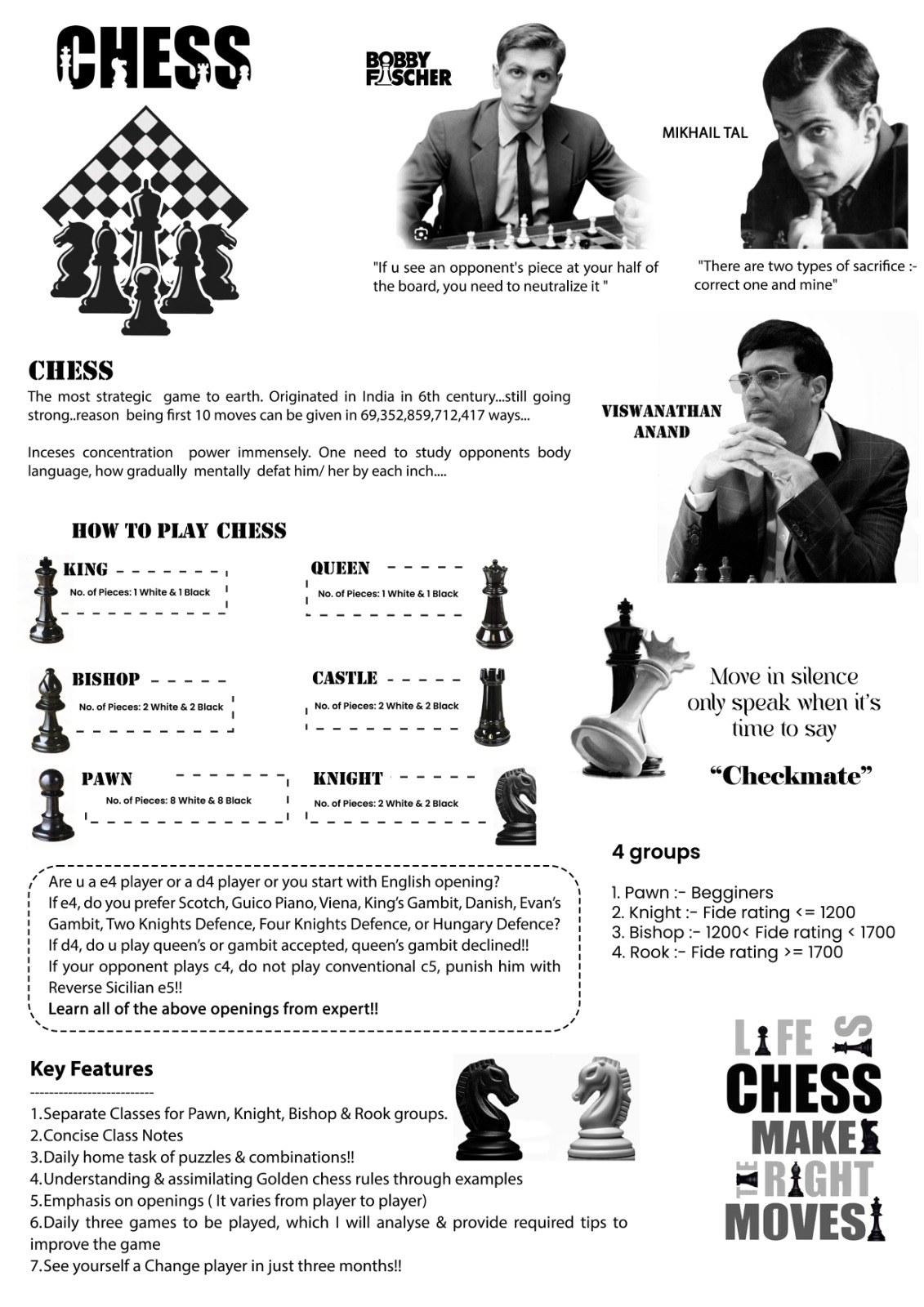9 th
in a tournament at Janai
15 th
in KIT elo rating < 1700 category
20+
years of experience
1595
elo rating in classical chess playing only three tournament
About Chess

Strategy
Chess strategy is concerned with the evaluation of chess positions and with setting up goals and long-term plans for future play. During the evaluation, players must take into account numerous factors such as the value of the pieces on the board, control of the center and centralization, the pawn structure, king safety, and the control of key squares or groups of squares (for example, diagonals, open files, and dark or light squares).
The most basic step in evaluating a position is to count the total value of pieces of both sides. The point values used for this purpose are based on experience; usually, pawns are considered worth one point, knights and bishops about three points each, rooks about five points (the value difference between a rook and a bishop or knight being known as the exchange), and queens about nine points. The king is more valuable than all of the other pieces combined, since its checkmate loses the game, but is still capable as a fighting piece; in the endgame, the king is generally more powerful than a bishop or knight but less powerful than a rook. These basic values are then modified by other factors like position of the piece (e.g. advanced pawns are usually more valuable than those on their initial squares), coordination between pieces (e.g. a pair of bishops usually coordinate better than a bishop and a knight), or the type of position (e.g. knights are generally better in closed positions with many pawns while bishops are more powerful in open positions).
Another important factor in the evaluation of chess positions is pawn structure (sometimes known as the pawn skeleton): the configuration of pawns on the chessboard. Since pawns are the least mobile of the pieces, pawn structure is relatively static and largely determines the strategic nature of the position. Weaknesses in pawn structure include isolated, doubled, or backward pawns and holes; once created, they are often permanent. Care must therefore be taken to avoid these weaknesses unless they are compensated by another valuable asset (for example, by the possibility of developing an attack).


 using WordPress and
using WordPress and